Duvidha
Dir — Mani KaulI do not like Hindi movies — or so thought my peers in bdcommunity @azircon @zayedsakib. It's not true but they have reasons to assume so, as I've expressed my disapproval of Bollywood quite strongly. Bollywood movies have exaggerated gestures and they are very star oriented. It's a movie-making business industry with no sense of art (this description will fit Hollywood too). They typically have some common tropes in every single movie. The same way of expressing emotions. The same background music. Songs appear suddenly out of thin air where everyone dances along with them for no damn reasons. Mind you, these movies are not well crafted stylized musicals where dance and music are used as artistic expressions—but every single one of them turns into musical melodrama meaninglessly with no sense of cinematic language. I consider them plastic garbage.
As a person who's invested so much time in the seventh art created all over the world, I can come across as biased as other cinephiles, especially in picking films to watch (or to pour enthusiasm in) — however, my bias is not against a locale or language.
Even though Bollywood may claim the lion's share of Hindi films ever made, my dislike for Bollywood does not automatically translate as dislike of films made in the Hindi language in general. Moreover, language is a barrier that never bothered me when it comes to cinema. I like to see expressions in the frames more than what is spoken. To exonerate me, allow me to talk about a Hindi film I think very highly of.

Duvidha is a 1973 film by Indian auteur filmmaker Mani Kaul based on Rajsthani folklore. A young businessman gets married, takes the newlywed bride to his home on oxen carts (these vehicles were the primary mode of transportation once upon a time in this region). On the way to the home, they stop under a big banyan tree. The tree was inhabited by a ghost. The ghost falls in love with the bride immediately.
The groom, being a businessman through and through, leaves the next day on a business trip that would last 5 years, assuring the new bride, 5 years will go past like a breeze, despite her disapproval. On his way, he stops at the same Banyan tree, and learning of the groom's departure, the ghost takes the groom's shape and form and goes to his village—full of love and anticipation. He fools the parents easily enough but comes clean to the bride, revealing his identity and why he's there—the ghost was in love after all, how can he deceive her?
This is how this story begins.
The story might feel familiar to some. That is because Duvidha has a remake. Someone remade the film in 2005, named it Paheli, starring a popular Bollywood star Shahrukh Khan. I'm glad Paheli exists, which demonstrates my points with more ease — especially since both of the films are based on the same story. If someone watches these two movies side by side, they'd find Paheli is a typical Bollywood movie with unnecessary dances and music that is NOT CINEMA. Where Duvidha is an art film.
The story of Duvidha, born of folklore, does have some allegorical implications resulting from cultural fears—which we now see written behind autorickshaws in Dhaka city. And I love the characteristics of the ghost too, he's not a bodiless spirit, he can interact, even take shapes of people.
But Duvidha is a piece of art not because of the story — it is so because of its masterful frames and visual storytelling. Each frame is like a separate painting and together they express the story in an aesthetic delight.
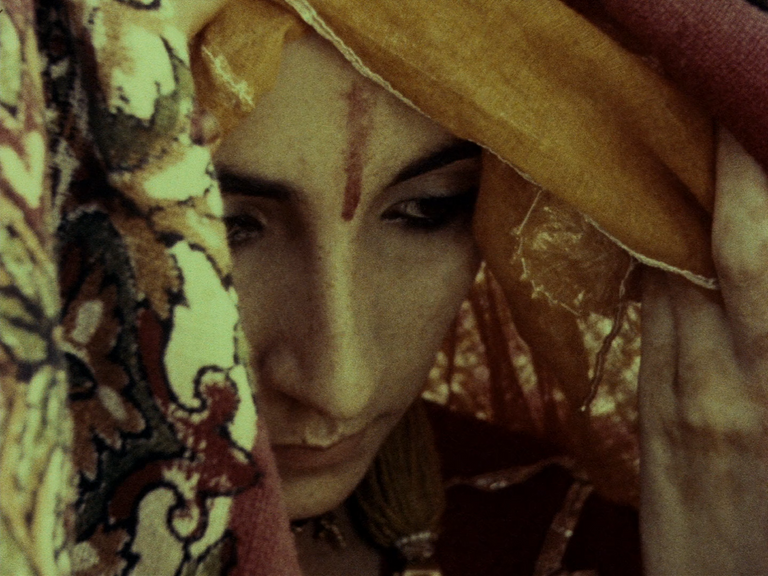
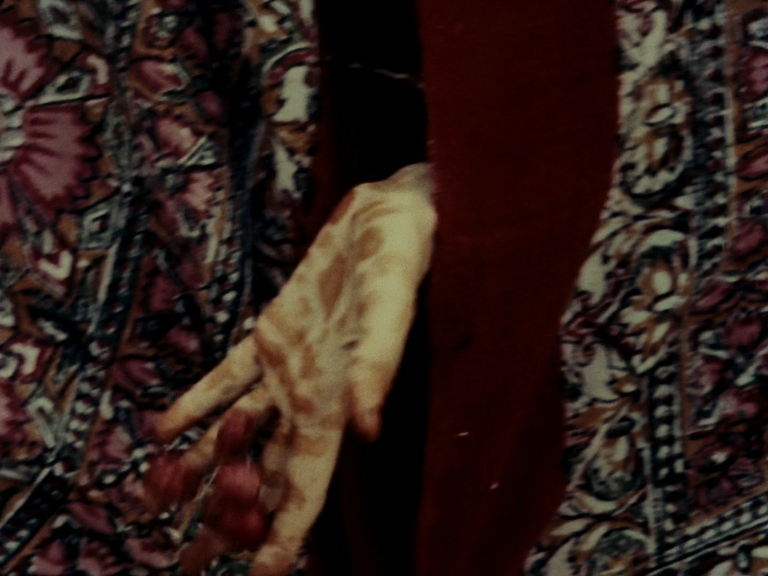

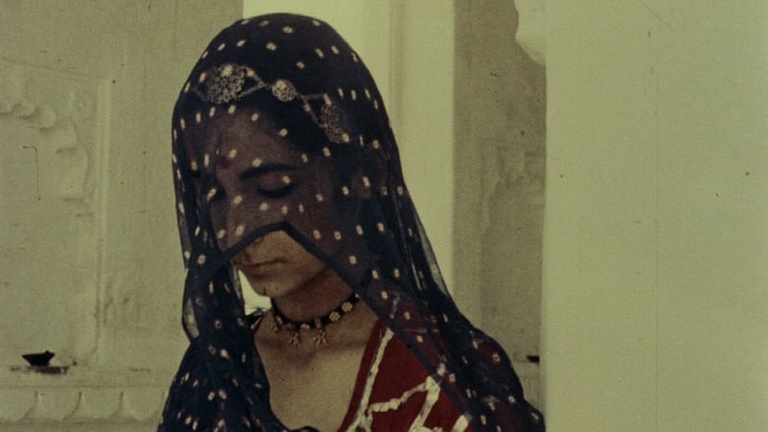
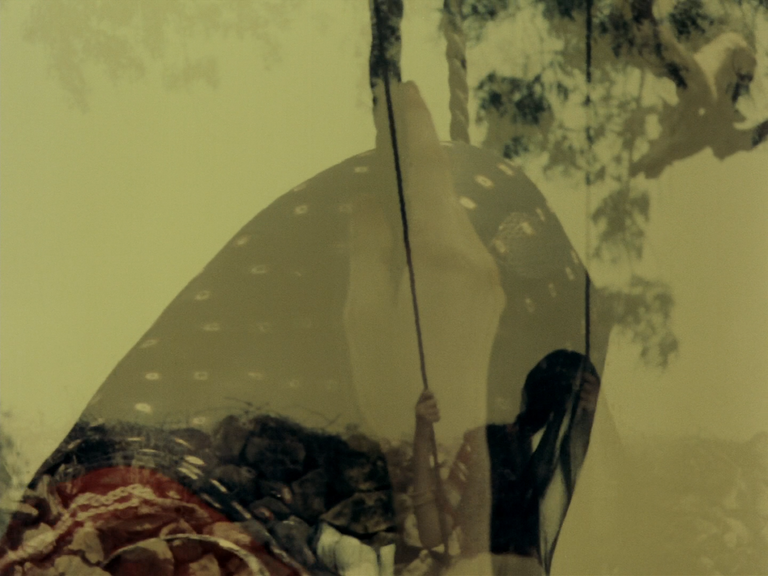
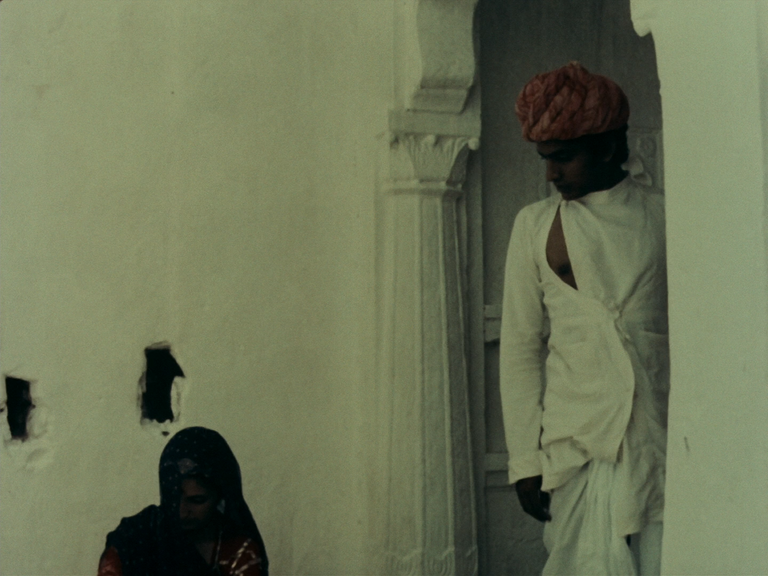
Duvidha has no weird songs and dances that divide the plot into chunks of messes, it doesn't have cringy melodrama — rather it uses local folk songs whereas background music and Indian classical music as soundtracks and they both serve their purpose.
Mani Kaul uses local resources, the film is as Indian as it can get, from story to actors and music, yet it shares so much with the world cinema. Cinematic essence does not get mutilated in Mani Kaul's picture, it flourishes in the same way it does, for example, in Sergei Parajanov's films. Duvidha becomes great not being like foreign films, rather, it maintains the fundamental film understandings, still retaining the Indian spirit, just like another Indian master Satyajit Ray.

I was actually quite surprised knowing the existence of Paheli, Mani Kaul is an admired auteur among film-going people, yet someone green-lighted a remake of Duvidha!
Oh, the audacity! Oh, the pompousness! Ha ha ha!
These Bollywood businessmen honestly thought it was a good idea to do that! Well, it takes guts going against history, I will give them that!
The photos are screenshots from the film.

You can read more of my film and literature related articles on my hive blog page.



You know I think I probably have watched this a while back. I used to watch a lot of movies back then. But think this one I watched in Nandan during one of the film festivals; right before I left for a field work in Rajasthan. You probably don’t know this, but during one of my masters degrees I spent 3 months in Rajasthan mapping... not continuously... but time to time. I used to stay in a village near Udaipur
You probably did, if it was in a film festival. It is usually a great selection.
I didn't know. Were you in india then? Or came to study the geography of the area?
I was in India then. Both your didi and I and several of our friends worked Rajasthan. It was common back then in our group
I see! From Duvidha I saw huge wastelands with sun kissed traumatized cracked earth, not many trees around. I wonder if Rajsthan is still like that. The cities will be different of course, excluding those.
Yes it's quite like that...
Such memories...
Rajasthan sort of made me who I am today :)
I made a solar compass I remember as I was mapping a big block of Magnetite essentially :). Magnetic compass didn't work there and it was time well before GPS. My navigation skills were developed from there :)
You see, this is what we are missing when we are so much specialized. Basic survival skills to hunt, gather foods and navigating the terrain can hardly be seen in modern man. Kudos to you!
I haven't visited India, but have plans to. Would love to see some of its locations.
Congratulations @notacinephile! You have completed the following achievement on the Hive blockchain and have been rewarded with new badge(s) :
Your next target is to reach 1750 replies.
You can view your badges on your board and compare yourself to others in the Ranking
If you no longer want to receive notifications, reply to this comment with the word
STOPCheck out the last post from @hivebuzz:
Support the HiveBuzz project. Vote for our proposal!
Like you I don't join all that weird dancing and rendition of the most popular Indian films, in fact I never had the patience to see them. The only exception was a film called: Taare Zameen Par - 2007, which has a dramatic and beautiful footprint, but still, it is not an artistic film or anything like that.
The picture of your nomination interested me a lot, maybe I will look for him around :)
I have never found out why do they do this, and I'm from that region. We do have a few great artists like Satyajit Ray, but unfortunately he and a few others weren't enough to change this trope.
I consider Mani Kaul among them, hope you'll like it as much as I did.